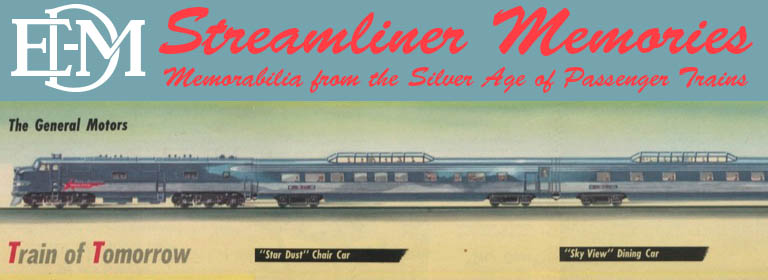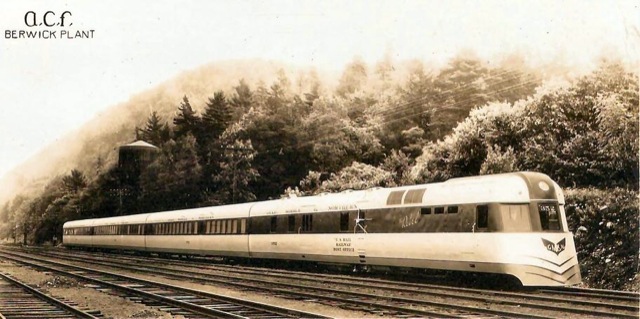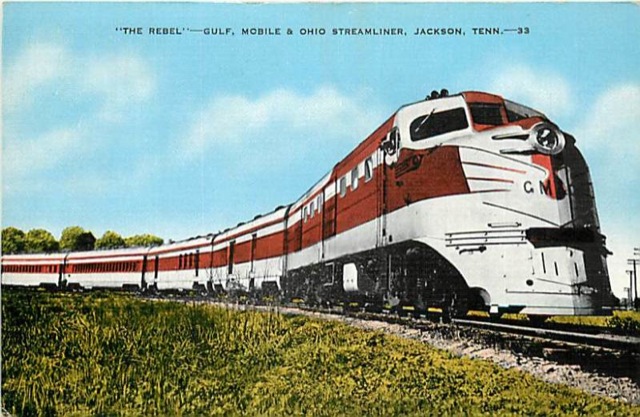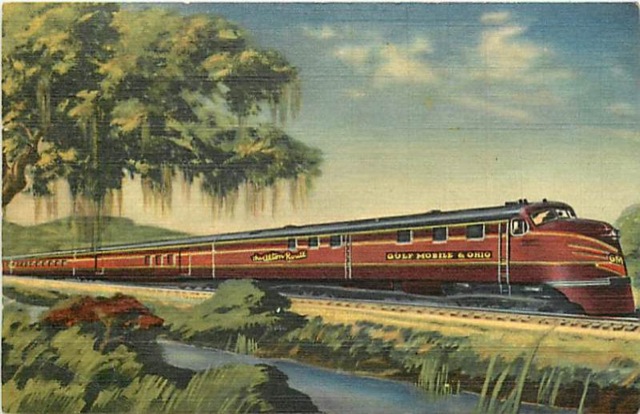In hindsight, Budd-built stainless steel cars hauled by General Motors Diesel engines–such as the Burlington Zephyrs or Santa Fe Super Chief–seem to be the epitome of streamlined trains. But in the mid-1930s, Budd and General Motors were both upstarts in the railroad world. Few “real” railroaders believed that Diesels could ever do more than work as switch engines or move tiny trains of the Zephyr-variety.
At that time, the “General Motors of rail locomotives” was the American Locomotive Company, or Alco. Like General Motors, Alco was a merger of several different locomotive manufacturers–eight, in fact–in 1901. While Baldwin (which, arguably, was the Ford of locomotive manufacturers) was a stiff competitor, few would bet against the quality and quantity of Alco steam locomotives.
So when Alco teamed up with Pullman rival American Car and Foundry (ACF) to build streamlined passenger trains, many in the rail industry might assume that the trains produced by this partnership would easily dominate over those new-fangled Budd-built trains. Yet the only major trains to result from this partnership were the Rebels, several trainsets owned by the relatively minor Gulf, Mobile & Northern Railroad.
The Rebels first began operating in overnight service from New Orleans to Jackson, Tennessee on July 29, 1935. ACF built the trains of Corten steel and powered them with a 660-HP Alco Diesel. Like the Royal Blue/Abraham Lincoln, the cars were not articulated.
Each train consisted of a power/mail/baggage car; buffet/coach; and sleeping/observation car. The GM&N owned one additional coach that was included in the train from New Orleans to Jackson, Mississippi, where it was detached and added to the return train from Jackson to New Orleans. In 1938, the GM&N purchased one more power car and a combination coach/sleeper from ACF and used these between Mobile, Alabama and Union, Mississippi, where the sleeper would be added to the train to Jackson, Tennessee. This meant the New Orleans-Jackson, TN train would have four cars to Jackson, MS; three cars to Union, MS; then four cars again to Jackson, TN.
The 1938 Streamline Trains report notes that the Rebels were “an evolution rather than an innovation, as the company has operated motor trains since 1924, and gas-electric trains since 1930.” However, the Rebels were the first streamlined train in the South and allowed the GM&N to be the first railroad in the nation to completely replace steam with Diesels in passenger service.
In 1941, the renamed Gulf, Mobile & Ohio purchased three 2,000-HP Alco DL locomotives to pull the Rebel trains, which it extended north to St. Louis. Both the original locomotives and DLs were designed by Otto Kuhler and featured three-part windshields, which was something of a Kuhler signature. To my eyes, long used to GMC E and F locomotives, Kuhler’s Diesels are not very appealing. Still, they were attractive to GM&N’s customers, as the railroad reported that ridership declined by 40 percent whenever the railroad had to temporarily replace the Rebels with conventional steam trains.
Click to download a PDF of this postcard.
Another unsuccessful pre-war carmaker/engine-maker partnership was St. Louis Car and Fairbanks Morse, which made a streamlined locomotive in 1939, of which only six were sold. Alco and Fairbanks Morse would go on to make many Diesel locomotives after the war, but could not beat the General Motors juggernaut that dominated locomotive manufacture for so many decades.



